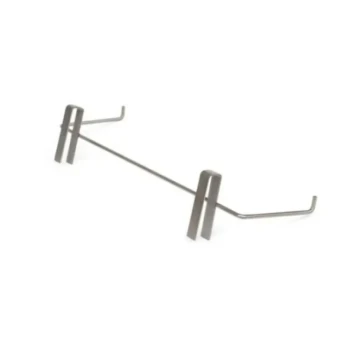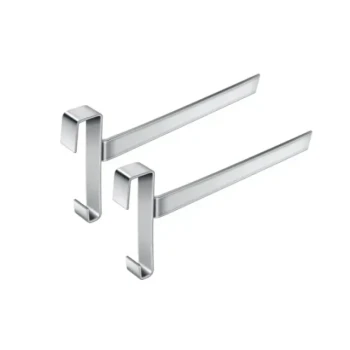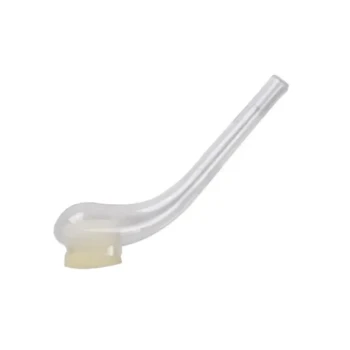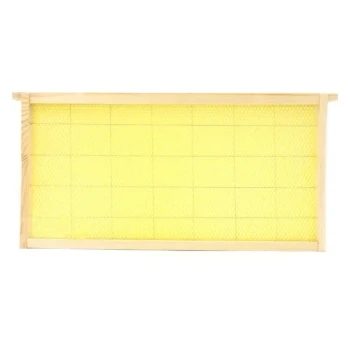At its core, a beekeeping hat and veil is your non-negotiable line of defense for your most vulnerable area. Its primary and most critical purpose is to create a physical barrier that protects your head, face, and neck from bee stings while you are inspecting or working with a hive.
The true value of a hat and veil extends beyond preventing pain. It is an essential tool for building confidence, enabling the calm focus and deliberate movements required for effective and safe hive management.
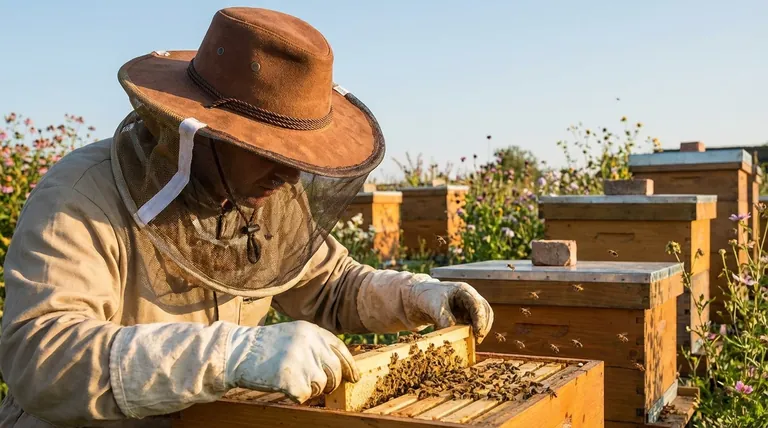
The Critical Role of Head and Face Protection
A beekeeping veil is widely considered the absolute minimum piece of protective equipment for any beekeeper, regardless of experience level. This is because of the unique risks associated with the head and neck area.
Shielding Your Most Vulnerable Areas
Stings to the face—particularly near the eyes, lips, or inside the nose—are significantly more painful and dangerous than stings elsewhere. The sensitive tissue in these areas can swell dramatically, posing a greater health risk.
Enabling Calm and Focused Work
When the fear of a facial sting is removed, a beekeeper can work with confidence. This allows for slow, deliberate movements that are less likely to alarm the bees, leading to a calmer hive and a more productive inspection.
Managing Unpredictable Bee Behavior
Even the most docile colony can have a bad day. Factors like weather, a recent disturbance, or a lack of nectar can make a hive unexpectedly defensive. A veil ensures you are always prepared for a sudden change in the colony's temperament.
Understanding the Trade-offs: Veil Types
While all veils serve the same core purpose, their design affects comfort, visibility, and how they integrate with other gear.
The Round Veil
This traditional style uses a wide-brimmed hat to support a cylinder of mesh that drapes down to the shoulders. It generally offers excellent, unobstructed 360-degree vision.
The primary drawback is that a breeze or certain movements can press the mesh against your face, creating a potential spot where a bee could sting through.
The Fencing Veil
This modern design, often integrated into a jacket or suit, uses internal structuring to create a squarer shape. This pulls the mesh taut and keeps it held away from your face at all times.
While this offers superior protection from stings through the mesh, some users find the structured front can slightly limit peripheral vision compared to a round veil.
The Veil in the Context of Total Protection
The veil is the starting point, but it works as part of a system. Understanding its place helps you gauge the level of protection you truly need.
The Absolute Minimum Standard
For any interaction with an open hive, a veil is essential. Many experienced beekeepers working with gentle hives might only wear a veil and street clothes for a quick check.
Integrated Systems: Jackets and Suits
For beginners or anyone performing a lengthy, disruptive inspection, a jacket or full suit with a built-in veil is recommended. This design eliminates the gap between the hat and your collar, creating a secure, bee-proof enclosure.
The Importance of Mesh Color
You will notice that nearly all beekeeping veil mesh is black. This is a critical design feature. Black mesh absorbs light and reduces glare, providing the best possible visibility for spotting the queen, eggs, and larvae within the shaded hive.
Making the Right Choice for Your Goal
Your choice of veil should align with your beekeeping style, risk tolerance, and the temperament of your bees.
- If your primary focus is maximum safety as a new beekeeper: Choose a beekeeping jacket with an integrated fencing-style veil to ensure full coverage and peace of mind.
- If your primary focus is quick inspections with known gentle hives: A simple, separate hat and round veil offers adequate protection that is easy to put on and take off.
- If your primary focus is the best possible visibility for detailed hive work: Prioritize any high-quality veil design that uses black mesh to minimize glare and maximize clarity.
Ultimately, the proper veil transforms beekeeping from a risk into a focused and enjoyable practice of animal husbandry.
Summary Table:
| Veil Type | Key Feature | Best For |
|---|---|---|
| Round Veil | Excellent 360° visibility; traditional design | Quick inspections with gentle hives |
| Fencing Veil | Mesh held away from face; superior sting protection | Beginners or those wanting maximum safety |
| Integrated (Jacket/Suit) | Full enclosure; no gaps at the collar | Lengthy inspections or defensive hives |
Protect your apiary with confidence. HONESTBEE supplies professional-grade beekeeping hats, veils, and full protective suits to commercial apiaries and beekeeping equipment distributors. Our wholesale-focused operations ensure you get the durable, high-visibility safety gear your business needs to manage hives safely and efficiently. Contact HONESTBEE today to discuss your supply requirements!
Visual Guide
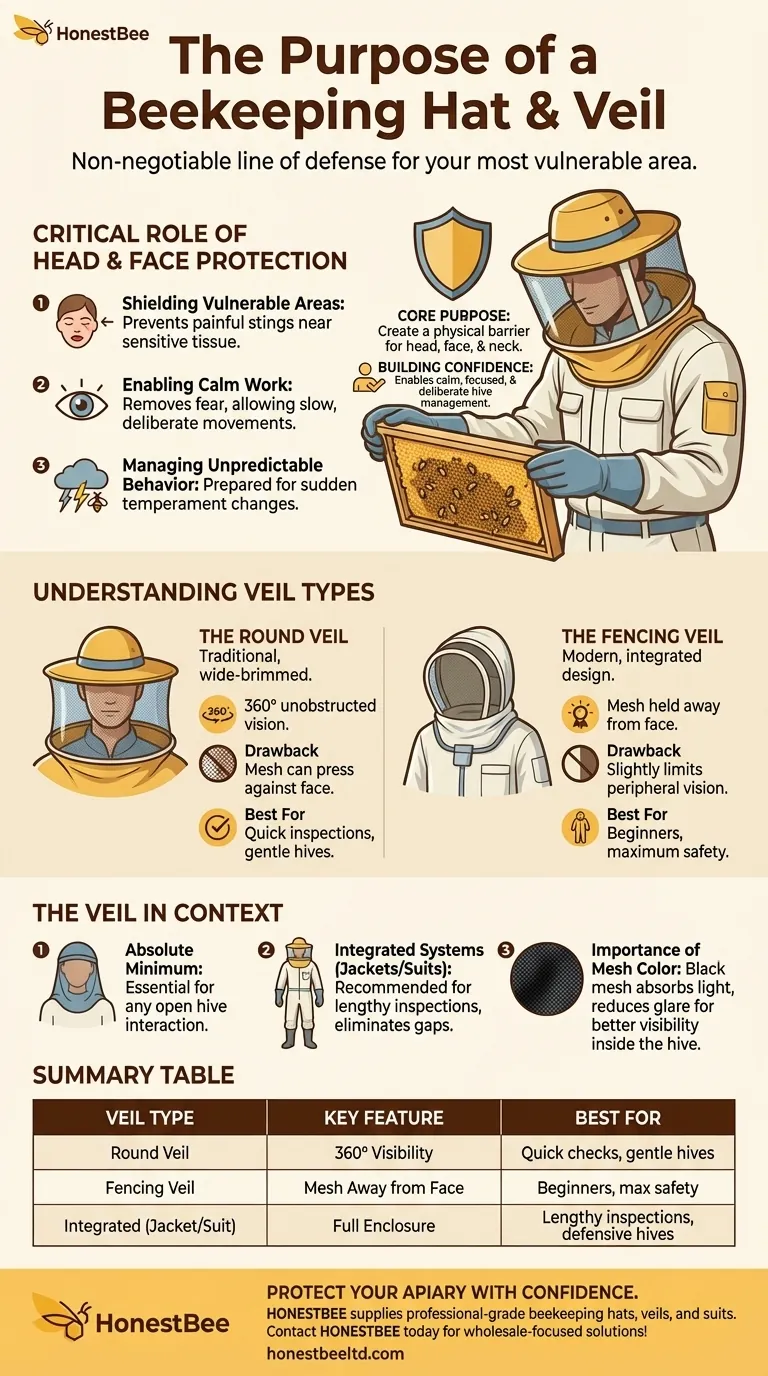
Related Products
- Heavy Duty Cowboy Beekeeper Hat with Visibility Veil Outdoor Professional Beekeeping Protective Gear
- Beekeeper Cowboy Hat and Veil for Beekeeping
- Square Folding Bee Hat Veil with String for Beekeeping
- Cotton Beekeeping Suit and Round Hat with Veil Bee Keeper Protective Gear
- Professional Beekeeping Suit for Kids and Girls Childrens Bee Keeper Suit
People Also Ask
- Why is head protection important for beekeepers? Essential Safety for Confident Hive Management
- What features enhance the quality of the beekeeping veil? Choose the Right Protection for Your Apiary
- Why are a hat and veil considered the most important parts of beekeeping protective gear? Essential Protection for Your Face and Confidence
- What are the benefits of the lightweight fabric used in the beekeeping hat veil? Enhanced Visibility & Comfort for Hive Work
- What is the purpose of the high visibility veil on the beekeeping hat? Ensure Maximum Safety and Clarity








